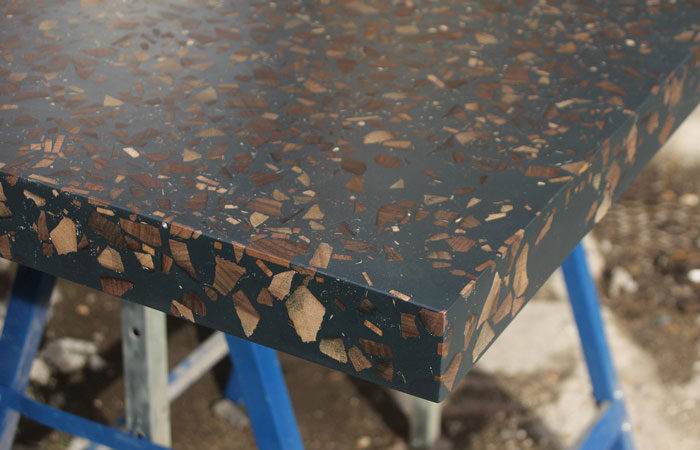A Conversation Between: Jim Biddulph & Jake Solomon
It’s uncommon for professional athletes or coaches to move to a new sport (Ted Lasso aside) and it’s perhaps even rarer that they make the leap into an entirely new industry altogether. Having moved to America to study towards the beginning of the new millennium, Jake Solomon established himself as a basketball coach, which as a Brit, is rather unprecedented in itself. But he successfully did so for a decade, competing around the world as well as in the U.S. Yet, in 2011 he made an enormous pivot, calling time on his sporting career and moving back to Europe – initially France – where he started casting interior surfaces from his shed. What began as a passion project soon became a fully-fledged career and led to the inception of Solomon&Wu, a brand specialising in innovative architectural mouldings. Projects for the likes of Alexander McQueen and David Collins Studio soon followed although collaboration has always been a big part of Jake’s approach.
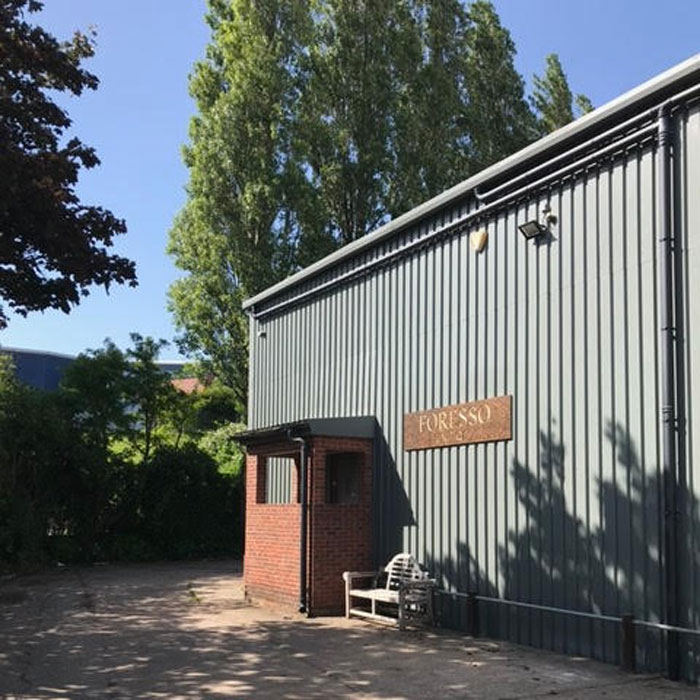
Having worked with and helped develop the work of several young or early career surface designers, Jake teamed up with Conor Taylor, who had invented a timber terrazzo, Foresso. The unique aesthetic of the material, along with the sustainability credentials of the brand has made it a hit with the A&D community and beyond, with a recent project that has transformed unsalvageable frames from the National Gallery into surfaces for the new Learning Centre typifying the type of work they do. Oh, and they also took on a foundry in 2018!
The journey from basketball coach to surface manufacturer and joint purveyor of the world’s first timber terrazzo is a unique and inspiring one, and indeed there has been a lot of hard work and imagination in pulling it off. I caught up with Jake to discover more about this captivating progression into the world of high-end manufacturing.
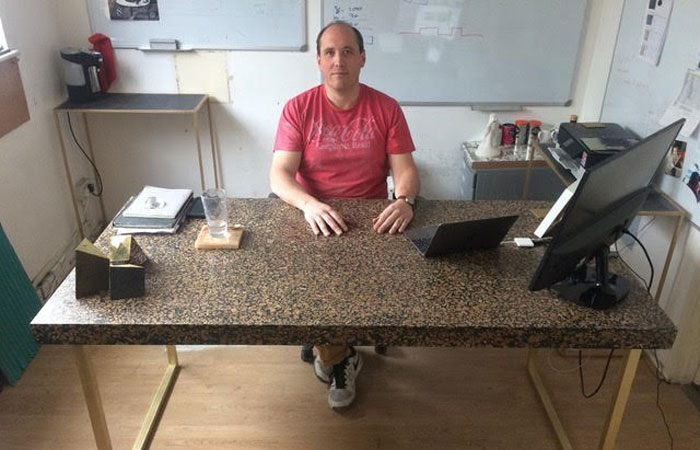
JB: Knowing that your career started as a basketball coach I guess I have to ask how you how and why you made the move to making and manufacturing? Is it possible to give a potted history of your career thus far?
JS: I loved basketball, especially seeing players develop and grow into new roles. It gave me the opportunity to travel without being a tourist and I visited 78 countries and met all types of people, which opened my eyes to how people live and enjoy life in a multitude of ways. I became disillusioned with coaching and winning being the main aim of sport. I was a bit more about the process and gradually realised I wanted to do something in which the process was the focus, and ideally a repeatable one that allowed for other people to make things, not just me. I found this in plaster mouldings initially and then decorative resin panels. However, the process still involved too many decisions so I started to sponsor young material designers to come up with new products using my workshops and resources.
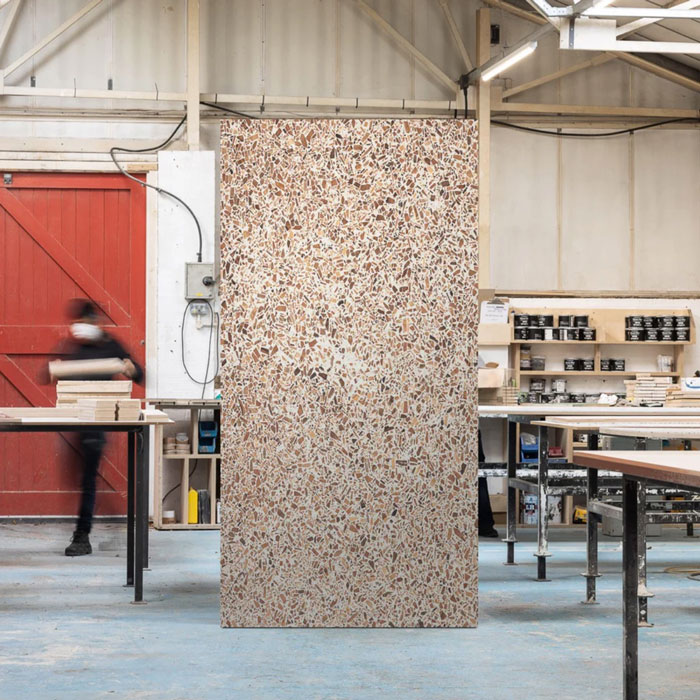
JB: And it’s this open and collaborative approach that led to you working with your now business partner Conor Taylor, with whom you make the timber terrazzo Foresso as well as running a foundry.
JS: Yes, Conor came to me through the idea of helping him develop his invention Foresso. It immediately appealed to me and we developed the process into a very simple if labour-intensive method. At the same time, I was asked if I wanted to buy a bronze foundry in Birmingham. Despite not wanting to move to Birmingham our landlord had kindly offered to double our rent at our break clause so I was looking to find new premises. In the end, this worked out well; Conor put some money in, and we bought Lunts Castings. Then we moved Foresso up to Birmingham with 2 people as staff. Lunts was a very old business that needed total renovation, and we replaced every wall, roof, gas pipe, water pipe, electrical wire, and all local exhaust ventilation (LEV) over 1600m2, and also fitted out the Foresso building at the same time. It was an intense period and at the same time, Foresso was doubling its size every year, which has levelled out now at around 25 employees this past year. The biggest achievement has been creating a good business culture where people know what to expect from us as staff and clients, and making things that will stand the test of time.
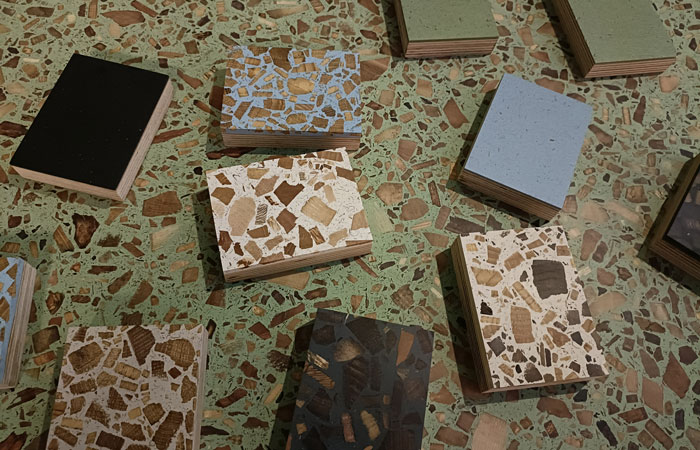
JB: Foresso is such a unique and eye-catching material and I know it’s gone through a series of developments since its first inception. Are you able to share a little more of that journey and what has been involved along the way?
JS: Conor invented Foresso while working in a joinery shop and throwing away lots of scrap hardwoods. Once he had developed it into a saleable product he came to me and I helped him progress it into a commercially viable product, designing a process that would allow for the scaling of production. At first, the end grain timber was being smashed with a hammer in a cloth bag, then we bought a small chipper and eventually a large chipper. Alongside this, we added CNC machining and some very heavy-duty drum sanders to create flat sheets. Along the way, we had to overcome many issues around bowing and curing speeds as well as reducing resin content, all the while growing at 100% year-on-year for 4 years. This has required significant investment into plant and space which was really supported by Birmingham City Council with several small grants towards new flooring, racking, and LEV. Without any investment all of our spending has come out of cash flow, which has been challenging at times – we relied on Hire Purchase for the larger machinery and will finish paying this off in October this year. It has been interesting that these machinery purchases have been the least financially taxing of all our spending and the best return on investment. All of the above sounds quite dry but essentially when Conor showed me Foresso it seemed like a good idea and I really loved the feel of it as opposed to stone, glass, or resin.
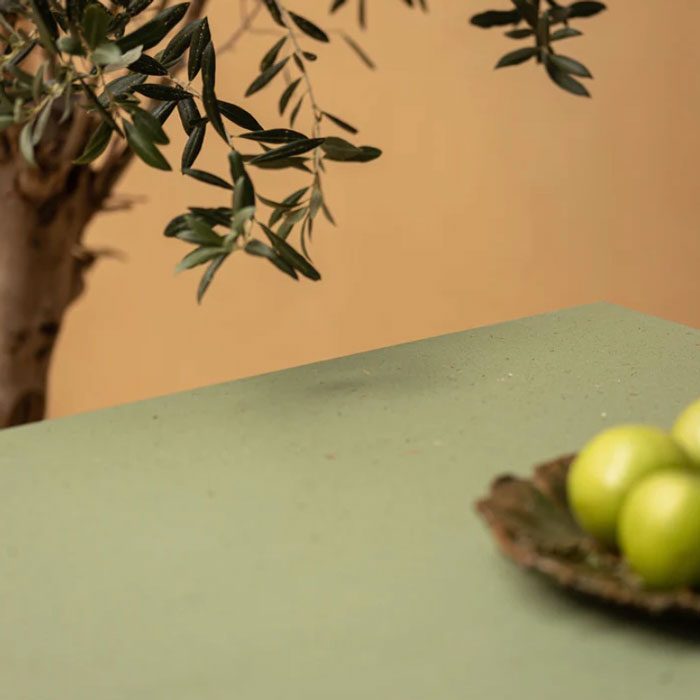
JB: I’m also particularly keen to know more about the sustainability journey of the product in general. How has this progressed for you guys and do you have thoughts or insight about how manufacturing industries can improve?
JS: The first idea behind Foresso was to make something that intervened in a waste stream that was not part of a circular economy. Plastics for example already have a large and established circular economy turning plastic products back into more plastic products, so there is no point in making anything else out of plastic waste as it only requires more virgin plastic to be produced. Wood as a waste stream at a local level does not have a circular economy attached to it so the value of intervening was clear to see. The wood we use would otherwise be pulped or burned releasing the greenhouse gas (GHG) content back into the environment. By creating long-lasting products we embody that carbon in the panel. As we have increased the volume of production, we have tried all sorts of binders but have not achieved a commercially viable product without epoxy. Due to the high carbon footprint of epoxy, we have strived to reduce the amount we use and have done this in a number of ways; by casting smaller pieces to suit the order, increasing the filler content to reduce the volume of resin and by changing the processes around casting to reduce waste. We have found that the biggest carbon savings have come in our process design. By reducing energy inputs we have drastically reduced the carbon footprint of the product. This includes improving our heating systems, making our LEV more efficient, shortening our supply chain to within 50 miles of our premises, and many more small actions. Quite often it is the Scope 3 emissions that are a bigger contributor to carbon content than anything else. Being conscious about suppliers and distances is a good starting point. It has often been the case that buying in bulk from source has been hugely less carbon intensive than frequently from a local distributor, this is about the last mile of delivery.
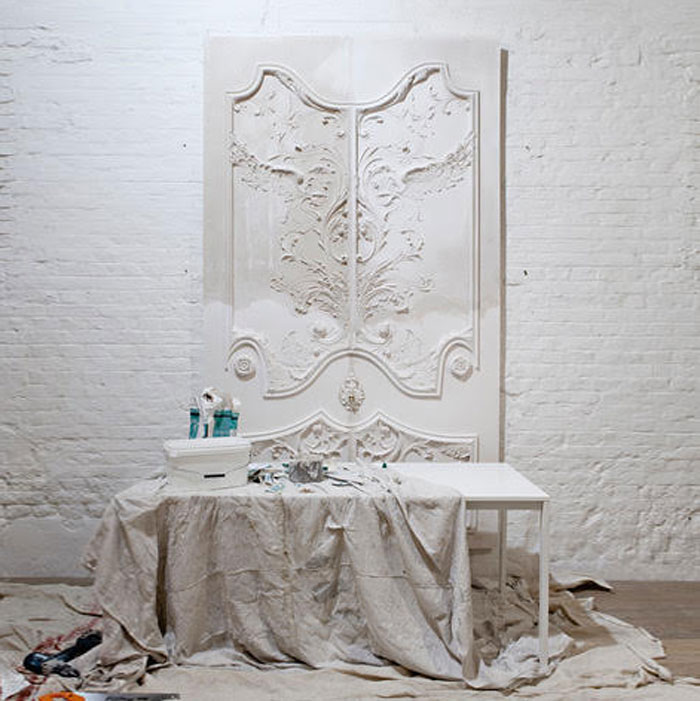
Project for Alexander McQueen
JB: I’m aware that you’re trying to apply the same rigour to the foundry too, can you expand on that as well as sharing some of the work you produce there?
JS: As I mentioned, the foundry Lunts Castings Ltd was purchased in 2018 and was in a state of advanced dilapidation. Having renovated it over 18 hectic months, we have since been trying to become carbon neutral. It is mainly a service foundry for the art industry which is a very price-sensitive market and does not really operate as a typical market as no-one really needs a sculpture per se. After Covid the galleries we worked with nearly all had a big slow down and none of them have recovered fully yet. In response to this, we started our own e-commerce shop www.gwlunt.com selling homewares. This has been a really interesting project and is just starting to make money after a year of investment. Part of our ongoing plans are to introduce new technologies to the foundry industry and we have done this with the support of the Department for Energy and Net Zero, working with them through the Industrial Energy Transformation Fund (IETF) which supports 70% grants towards purchasing of low carbon manufacturing machinery and plant. Through this, we have become quite involved in the idea of SME de-carbonisation, which is a route to better business practices and more skilled jobs in the UK manufacturing sector. If we can help spread the word then we are happy to!
